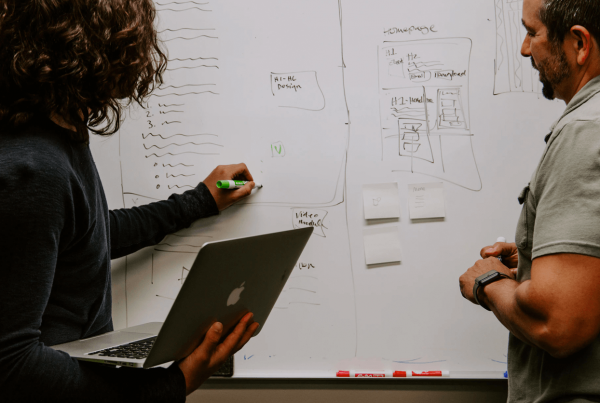Ah, good ol’ change management. Fun, isn’t it? I came upon this blog post and found that it fits very nicely with the topic of moving from a traditional, text-based requirements process to one that incorporates visualization. It talks about how people are the key to successful change management.
In over 5 years of specializing in using visualization as a means to elicit, manage and deliver software application requirements, we’ve seen many companies want to, but ultimately fail in adopting visualization across the enterprise.
Most if not all fall into what I’ll call the “Tool Trap”. This is not unique to visualization of course. Some tool vendor promises to solve whatever problem a company is having. What the vendor mostly fail to convey, and what businesses never seem to truly learn, is that the tool is just one (very small) part of the solution. Sure, the tool will solve the problem, but only if the company implements the right processes, and more importantly, puts together the right team.
Change Your Process
So you’ve seen how visualization can help you revolutionize your requirements definition and delivery process. You have purchased a tool – iRise, Axure, Blueprint, Balsamiq, Flairbuilder, or even a stack of napkins and a gross of pencils. Now what?
Simply put, visualization cannot be crowbarred into your existing software development lifecycle (SDLC). It doesn’t matter if you use waterfall, Agile, RUP or a homegrown combination. You have to take a step back and look at how visualization can enhance the SDLC. You need to involve not just your stakeholders and business analysts, but the entire development team – QA testers, developers, etc.
People Are The Key To Success
Here is where most change management fails. It’s the people! You need to bring together the entire team involved in bringing software applications to life. But the message that needs to be communicated is not just that your software projects will come in 30% faster and 80% less rework. According to ClarityRules.org, you need to sell the team in five key areas
- Impact on society (like building the community, stewarding resources etc…)
- Impact on the customer (providing superior customer service, for instance)
- Impact on the company and its shareholders
- Impact on the local working team (for example creating a caring environment)
- Impact on ‘me’ (development, paycheque, bonus, hours, type of work etc…)
Visualization’s Impact on Society
We strongly believe software has a huge impact on society. We’ve been fortunate to have worked with some incredible organizations like March of Dimes, Catholic Relief Services (CRS) and the Department of Homeland Security on software projects. And I assure you these organizations have a huge impact on society. Using visualization significantly improves the positive impact of the software they use. Of course not every software application helps save babies or keeps our country safe. But I assure you, your software has an impact on society in some way. Find out what that is and communicate how it will be even better with the use of visualization.
Visualization’s Impact on the Customer
This one is easy. Visualization helps you be more innovative. It helps you ensure a quality experience for your customer, whether they be consumers buying your widgets or your colleagues using your intranet. Visualization gives you more time to focus on the customer because you’re spending less time spinning your wheels elsewhere.
Visualization’s Impact on the Company
Projects come in 30% faster, there is 80% less rework, increased innovation, superior customer experiences. More of what you wanted the first time around. This pays dividends in spades to your company’s bottom line, reputation, customer satisfaction and more.
Visualization’s Impact on the Local Working Team
Visualization fosters greater collaboration with the entire team from stakeholders to developers to QA testers. Stakeholders are happier because their vision is actually brought to life. Developers are happier because there is less frustrating rework. QA Testers are happier because there are less defects to log and track. It’s a win-win-win-win situation.
Visualization’s Impact on ‘Me’
The bottom line? Visualization makes software definition fun and interesting again. Instead of dealing with all the frustrating aspects of eliciting and managing requirements, you can work on being creative and innovative. You can focus on making your customers happy. You’re also learning new skills and ones that are essential for the future of software requirements.
Final Thoughts
Implementing visualization at your company is not a minor undertaking. It takes careful consideration of your existing processes and team. Buying the visualization software is not enough.



